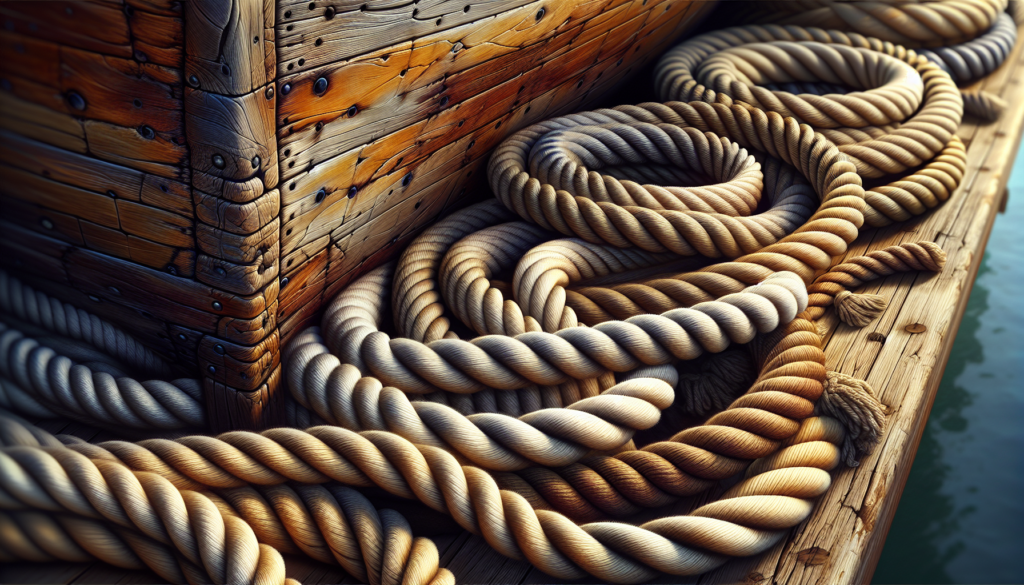Exploring the Intricacies of Boat Ropes
Boat ropes, often overlooked yet crucial components of any watercraft, play a pivotal role in ensuring the safety, functionality, and maneuverability of boats. From securing vessels to docks to hoisting sails, boat ropes are versatile tools that have been used for centuries by sailors and mariners around the world. In this comprehensive guide, we delve deep into the world of boat ropes, exploring their history, types, uses, maintenance, and much more.
The Evolution of Boat Ropes
Boat ropes have a rich history that dates back to ancient civilizations. The first recorded use of ropes on boats can be traced back to the Egyptians, who used woven papyrus reeds to create simple cordage for their watercraft. Over time, as societies advanced, so did the technology and materials used in rope-making. From natural fibers like hemp and cotton to synthetic materials such as nylon and polyester, the evolution of boat ropes has been marked by innovation and adaptation.
Today, modern boat ropes are made from a variety of materials, each with its own unique properties and advantages. Nylon ropes, for example, are known for their elasticity and shock-absorbing capabilities, making them ideal for mooring and towing. On the other hand, polyester ropes are prized for their strength and resistance to UV radiation, making them a popular choice for rigging and anchoring.
The Different Types of Boat Ropes
There are several types of boat ropes available on the market, each designed for specific purposes and applications. Some of the most common types of boat ropes include:
- Mooring Ropes: used to secure a boat to a dock or mooring buoy.
- Anchor Ropes: used to anchor a boat in place.
- Sail Control Ropes: used to control the sails and rigging of a boat.
- Towing Ropes: used to tow another vessel or object.
Each type of boat rope has specific characteristics that make it suitable for its intended use. For example, mooring ropes are typically thicker and more durable to withstand the constant strain of a boat pulling against them, while sail control ropes are often lightweight and easy to handle for quick adjustments on the water.
Uses of Boat Ropes
Boat ropes serve a wide range of functions on a watercraft, from securing the boat in place to controlling the sails and rigging. Some common uses of boat ropes include:
- Mooring: securing the boat to a dock or mooring buoy.
- Anchoring: anchoring the boat in place to prevent drifting.
- Sail Control: adjusting the sails and rigging to harness the wind.
- Towing: towing another vessel or object in distress.
Without the proper use of boat ropes, navigating the waters can be hazardous and challenging. Ensuring that boat ropes are in good condition and properly secured is essential for the safety of the vessel and its occupants.
Maintenance and Care of Boat Ropes
Proper maintenance and care of boat ropes are essential to ensure their longevity and effectiveness. Over time, exposure to saltwater, UV radiation, and general wear and tear can weaken the fibers of boat ropes, making them prone to breakage and failure. To prolong the life of boat ropes, it is important to:
- Regularly inspect ropes for signs of wear and damage.
- Clean ropes with fresh water and mild soap after each use.
- Store ropes in a cool, dry place away from direct sunlight.
- Avoid stepping on or dragging ropes across rough surfaces.
By following these simple maintenance tips, boat owners can ensure that their ropes remain in good condition and perform optimally when needed.
Expert Opinions on Boat Ropes
According to renowned marine engineer and sailor, John Smith, “Boat ropes are the unsung heroes of the maritime world. Without them, sailors would be adrift at sea, unable to navigate or secure their vessels. Investing in high-quality boat ropes and properly maintaining them is essential for the safety and success of any boating adventure.”
Smith’s sentiments are echoed by many experts in the field, who emphasize the critical importance of boat ropes in maritime operations. From seasoned sailors to marine engineers, the consensus is clear: boat ropes are indispensable tools that every boater should have in their arsenal.
Common Misconceptions about Boat Ropes
One common misconception about boat ropes is that all ropes are created equal. In reality, the type of rope used on a boat can have a significant impact on its performance and safety. Using the wrong type of rope for a specific application can lead to accidents, damage to the vessel, and even injury to passengers.
Another misconception is that boat ropes are only necessary for larger vessels. In fact, boats of all sizes can benefit from the use of properly selected and maintained ropes. Whether it’s a small dinghy or a large yacht, having the right ropes on board is essential for safe and efficient boating.
Conclusion
To wrap things up, boat ropes are essential components of any watercraft, serving a variety of functions from securing the boat to controlling the sails. Understanding the different types of boat ropes, their uses, and how to properly maintain them is key to a safe and successful boating experience. By investing in high-quality ropes and following proper maintenance protocols, boaters can ensure that their vessels are well-equipped to navigate the waters with confidence and ease.
Whether you’re a seasoned sailor or a novice boater, having a solid understanding of boat ropes is essential for safe and enjoyable adventures on the water. So next time you set sail, remember the importance of these humble yet crucial tools that keep you anchored to the sea.



